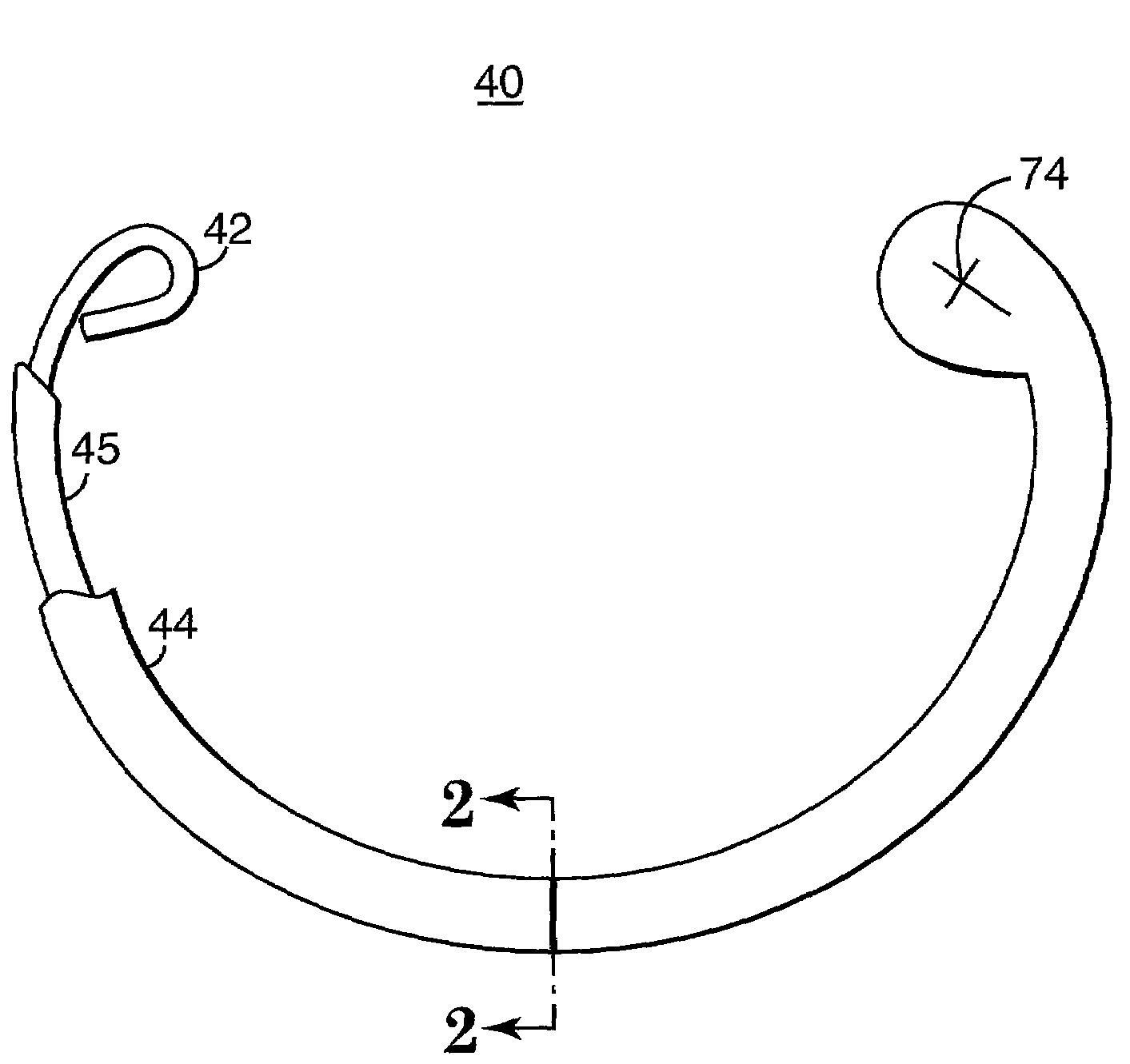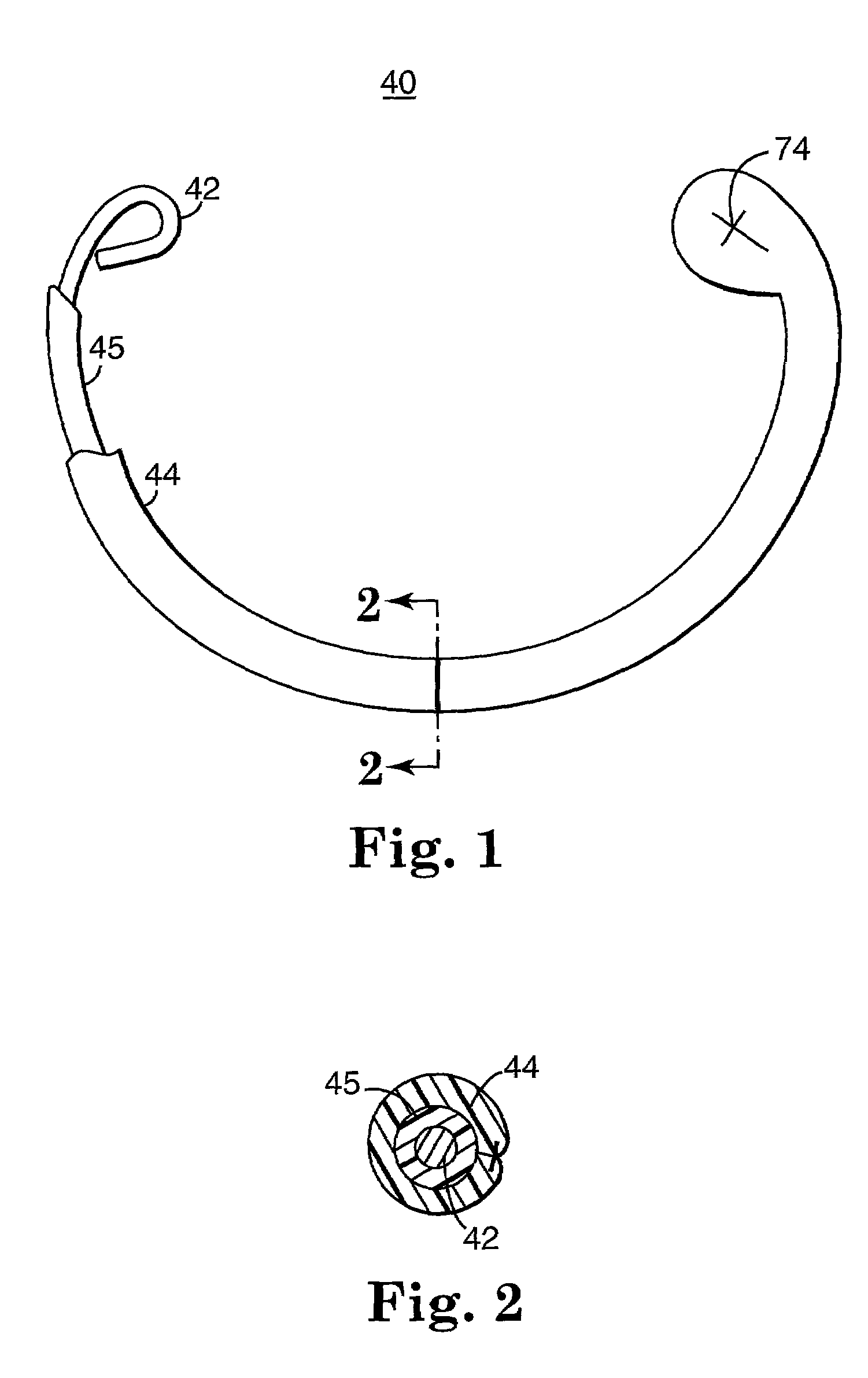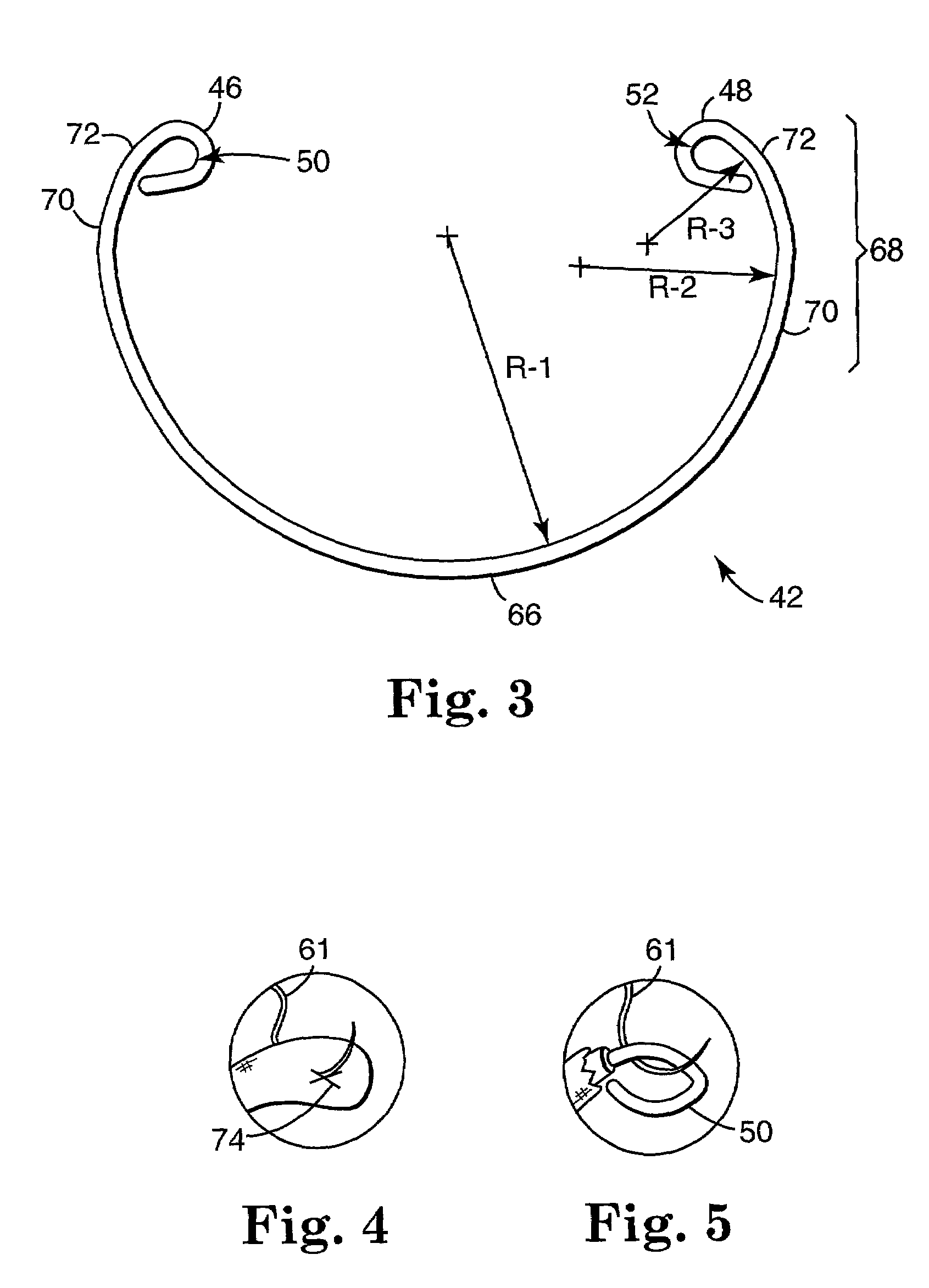Annuloplasty band and method
a technology of annuloplasty and band, which is applied in the field of devices and methods for repair of heart valves, can solve the problems of distortion of the normal shape of the valve orifice, left ventricular outflow obstruction, and both valves can be subjected to or incur damage, and achieve the effects of convenient passage of sutures through the eyelets, convenient implanting, and accurate evaluation of the valve annulus
- Summary
- Abstract
- Description
- Claims
- Application Information
AI Technical Summary
Benefits of technology
Problems solved by technology
Method used
Image
Examples
Embodiment Construction
[0050]As illustrated in the drawings, and in particular FIG. 1, a preferred embodiment of the annuloplasty band of the invention is designated in its entirety by the reference numeral 40. The annuloplasty band 40 is particularly adapted to repair one of the atrio-ventricular valves, such as the mitral and tricuspid valves. As a point of reference, the annuloplasty band 40 illustrated in FIG. 1 is configured for mitral valve annulus repair, it being understood that other shapes may be incorporated for other valve annulus anatomies (e.g., tricuspid valve annulus). Thus, the present invention is not limited to mitral valve annuloplasty.
[0051]With additional reference to the cross-sectional view of FIG. 2, the annuloplasty band 40 generally includes a stiffening element 42, such as stiffening wire, and a fabric sheath 44 enclosing the stiffening element 42. The preferred stiffening wire 42 is preferably overmolded with a biocompatible, biostable, implantable, medical grade elastomeric m...
PUM
 Login to View More
Login to View More Abstract
Description
Claims
Application Information
 Login to View More
Login to View More - R&D
- Intellectual Property
- Life Sciences
- Materials
- Tech Scout
- Unparalleled Data Quality
- Higher Quality Content
- 60% Fewer Hallucinations
Browse by: Latest US Patents, China's latest patents, Technical Efficacy Thesaurus, Application Domain, Technology Topic, Popular Technical Reports.
© 2025 PatSnap. All rights reserved.Legal|Privacy policy|Modern Slavery Act Transparency Statement|Sitemap|About US| Contact US: help@patsnap.com



